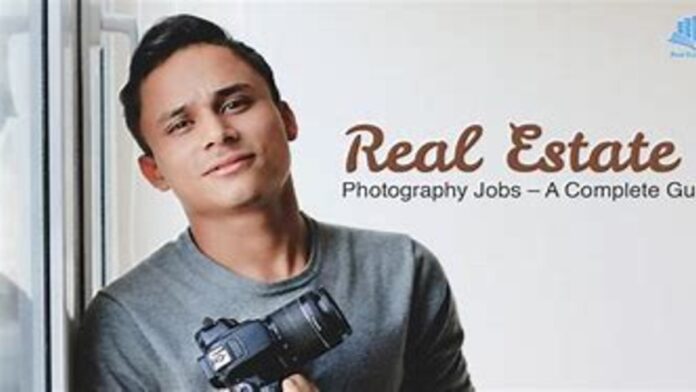Real estate photography jobs is an essential aspect of property marketing, helping realtors and homeowners showcase properties in the best light. With the rise of online property listings and virtual tours, the demand for skilled real estate photographers continues to grow. Whether you’re an aspiring photographer or a seasoned professional looking to specialize in this niche, real estate photography offers a lucrative and rewarding career path.
What is Real Estate Photography?
Real estate photography involves capturing high-quality images of residential and commercial properties for marketing purposes. These images help potential buyers and renters visualize properties before scheduling a visit. A real estate photographer focuses on composition, lighting, and angles to highlight the best features of a home or building.
Job Responsibilities of a Real Estate Photographer
Real estate photographers perform various tasks to ensure top-quality property images, including:
- Shooting interior and exterior property photos
- Editing and enhancing images using professional software
- Creating virtual tours or 3D walkthroughs
- Working with real estate agents, property owners, and developers
- Managing schedules and traveling to different property locations
- Ensuring proper lighting and staging for each shoot
Skills Required for Real Estate Photography Jobs
To succeed in real estate photography, professionals must have a blend of technical and creative skills, such as:
- Photography skills: Knowledge of camera settings, composition, and framing
- Editing skills: Proficiency in Adobe Photoshop, Lightroom, or other editing software
- Lighting expertise: Ability to work with natural and artificial lighting
- Drone operation: Aerial photography skills for capturing stunning property shots
- Marketing knowledge: Understanding of real estate trends and presentation techniques
- Interpersonal skills: Ability to communicate with clients and meet their specific needs
How to Get Started in Real Estate Photography
If you’re new to real estate photography, follow these steps to start your career:
1. Invest in the Right Equipment
- A high-quality DSLR or mirrorless camera
- Wide-angle lens for capturing spacious interiors
- Tripod for stable and sharp shots
- Drone (optional) for aerial views
- Professional editing software
2. Build a Portfolio
Start by photographing your own home or offering free shoots for friends and family. A strong portfolio will showcase your skills and attract potential clients.
3. Learn Photo Editing
Post-processing plays a crucial role in real estate photography. Learn how to adjust brightness, contrast, and remove imperfections to enhance images.
4. Network with Real Estate Professionals
Connect with real estate agents, property managers, and home builders. Establishing relationships in the industry can lead to consistent work opportunities.
5. Market Your Services
Create a professional website and showcase your portfolio. Use social media, SEO, and online advertising to reach potential clients.
Career Opportunities in Real Estate Photography
Real estate photography jobs can take different forms, depending on your interests and skills:
- Freelance Photographer: Work independently with multiple real estate agents or homeowners.
- In-House Photographer: Be employed by a real estate company to capture their listings.
- Virtual Tour Specialist: Focus on 360-degree photography and interactive virtual tours.
- Aerial Photographer: Specialize in drone photography for large properties and estates.
- Luxury Real Estate Photographer: Work with high-end properties that require premium images.
Salary and Income Potential
Earnings in real estate photography vary based on experience, location, and demand. On average:
- Entry-level photographers earn between $30,000 – $50,000 per year.
- Experienced professionals make $50,000 – $100,000+ annually.
- Luxury and drone photographers can charge premium rates, increasing their income potential.
FAQs
1. Do I need formal education to become a real estate photographer?
No, formal education is not required. However, taking photography courses and practicing extensively can improve your skills.
2. What is the best camera for real estate photography?
A DSLR or mirrorless camera with a wide-angle lens is ideal. Popular choices include Canon EOS 5D Mark IV and Sony A7R III.
3. How much should I charge for real estate photography?
Pricing depends on factors like location, property size, and services offered. Rates typically range from $100 to $500 per shoot.
4. Can I do real estate photography part-time?
Yes, many photographers start part-time and transition to full-time once they establish a client base.
5. Is drone photography necessary for real estate?
While not essential, drone photography enhances listings by providing unique aerial views, making properties more appealing.
Conclusion
Real estate photography is a promising career with growing demand. With the right skills, equipment, and marketing strategies, photographers can carve out a successful niche in this industry. Whether you’re a beginner or an experienced photographer looking for new opportunities, real estate photography offers creative and financial rewards.

